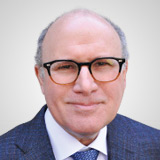The market continues on full throttle, despite a tepid economic recovery, although investors would do wise to keep track of the change in market-leading sectors, says Jon Markman of Strategic Advantage.
Stocks keep extending their sensational rally, pushing the major indexes to new highs, as the economic recovery theme, however tenuous, has taken firm hold of investors' imaginations.
Top sectors in recent weeks were all groups that have seriously lagged the market until now: Technology, Energy, and Materials. This changing of the guard is incredibly important: Rotation is the heart and soul—and ammunition and lubrication—of every major bull cycle rally.
The leading runners in the first leg of the race this year, health care, consumer staples, and utilities, have tired and are now just jogging. They have been replaced by techs, energy, and materials producers who were standing by all this time, ready to step in when required.
Investors are largely betting on the come, as they say in Vegas, that manufacturing and services will gain more traction in the second half. Because at the moment, virtually every signal of the economy is flashing yellow or red.
The employment report was a great example. There was an upside surprise as nonfarm payrolls were reported up 165,000 in the last month, ahead of the 140,000 consensus. Part of the reason was that despite all the concern about the sequester, federal government employment declined by only 8,000. Yet I would caution that 165,000 is a very mediocre number in an economy the size of the United States.
The best you can say about the bad economic news is that it's been good news for monetary policy. It has certainly kept inflation at bay. The Fed's preferred measure of underlying inflation-the Personal Consumption Deflator-sank to 1.1% year over year in the prior period, well below the Fed's 2% target. This gives the Fed cover to keep printing money through asset purchases.
The Wall Street Journal noted that the number of bond funds that own stocks has surged to the highest level in at least 18 years. This trend highlights the extent to which central banks are forcing investors out the risk curve.
The European Central Bank recently announced a quarter-point reduction in its main refinancing rate to 0.5%, and hinted that some members pushed for a larger cut. This is completely unprecedented, especially so late in a recovery, and very bullish for stocks in a really twisted way. To the old saw, "Don't fight the Fed," you can add the new adage, "Don't fight the ECB either."
Back in the United States, the housing market recovery remains the most firmly entrenched. Pricing remained the bright spot, as the Case-Shiller home price index rose a better-than-expected 1.2% month over month in February, leaving prices up 9.3% year over year, the biggest gain since May 2006. (That was pretty close to the housing market top, by the way.)
The blended first-quarter S&P 500 EPS growth rate jumped one percentage point to 3.2%, pushing above the 2.4% growth expected at the beginning of the quarter, and meaningfully ahead of the -0.5% estimated at the start of earnings season.
The aggregate revenue surprise rate jumped 0.9 percentage points into positive territory. In addition, although Q2 estimates continued to trend lower, FactSet noted that expectations for a fairly sharp acceleration in second-half growth remained resilient.
Tech was the star of the show, a first for this year, rising 4.5% in its biggest weekly gain since December 2011. Bloomberg noted that tech stocks have fallen to 13 times projected earnings, the lowest level in at least seven years. The negative earnings sentiment surrounding tech is probably overdone, which is supportive of prices.
Subscribe to Strategic Advantage here...
Related Articles:



















